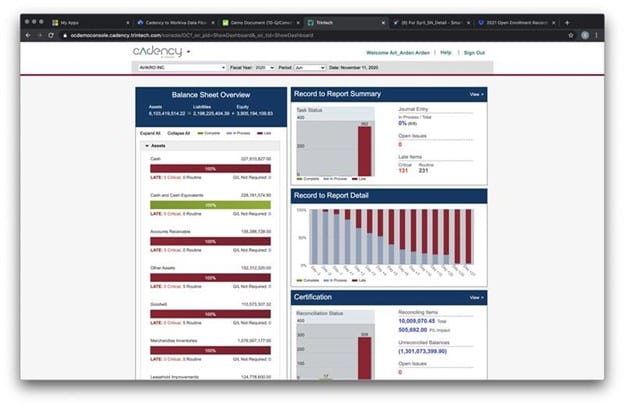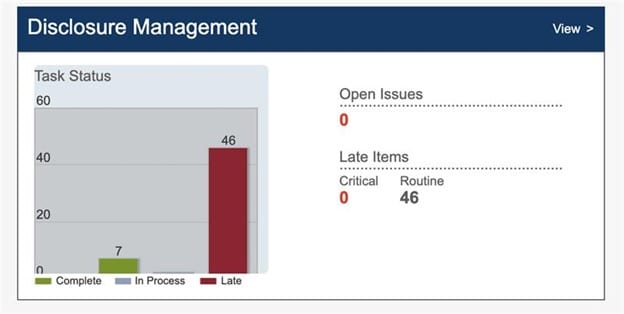How to Properly Prepare for Regulatory and Statutory Reporting
Blog post
Share
Each year, new requirements for regulatory and statutory reporting and expanded disclosures further challenge the Office of Finance around the globe. In North America, and for companies that are required to meet SEC reporting requirements, mandates requiring inline XBRL, require changes to taxonomies often to be considered annually. As well, changes to regulatory reporting driven by CECL, FERC or NERC have to be adopted.
In Europe, new requirements like ESEF now mean that over 5,300 companies must meet an annual filing requirement that encompasses not only expanded disclosure, but the introduction of iXBRL. And although recently delayed due to the pandemic, readiness is still being hailed as the appropriate step by authorities.
Review around expanded regulatory reporting has continued in APAC and Latin America and as new mandates are enacted, companies need to manage these new, often unfamiliar requirements. It is expected that while these territories lag behind, new mandates will soon drive these geographies to align to higher global standards for greater transparency, especially in the capital markets.
For many organizations, the only certainty they have with meeting these reporting requirements is more and expanded regulations are coming. This blog explores how organizations can best prepare themselves for these upcoming requirements, and how the correct technology solutions and partnerships can help navigate the challenges they pose.
What is Statutory Reporting
First, let’s define statutory reporting. Statutory reporting can be defined as: “The mandatory submission of financial and non-financial information to a government agency.” Additionally, each industry has its own set of laws, regulations and regulatory bodies that mandate reports.
However, despite the differences in the reporting requirements, by both industry and geographical location, most organizations approach regulatory reporting in the same way– with manual methods and disparate systems throughout some, if not all, of the process.
With this approach, organizations are left guessing on the details of the activities performed to fulfill their regulatory and statutory reporting requirements. This method also creates both inefficiencies and additional risks in the process, and this risk grows with each legal entity involved in the corporate structure. Furthermore, most organizations do not have full visibility into the tasks that are required to confidently supply validated financials to fulfill these requirements.
How to Properly Handle Statutory Reporting
To effectively meet statutory requirements, several key controls and steps are needed to ensure reports are completed in an accurate and timely fashion.
These:
- Statutory account preparation
- Statutory audit
- Statutory filing
The statutory account preparation component includes collecting and validating data from multiple systems for the creation of a trial balance that can be converted to local generally accepted accounting principles (GAAP) or International Finance Reporting Standards (IFRS). From here, the preparation and review of statutory accounts is completed to provide statutory audit support. Once these steps are complete, the preparation and filing of financial statements and all required documents with statutory agencies, per the applicable filing deadline dates, can be completed. With the increased digitalization of these filings, additional procedures are also in play to ensure submissions are appropriately handled and for best presentation.
The statutory account preparation stage is directly dependent on the activities performed upstream within the Office of Finance. This group of activity is often referred to as the “period close” and must be completed properly to ensure an accurate, timely and successful filing. The period could be a month, quarter or even fiscal year-end, but it will always encompass activities such as:
- Recording transactions and entries
- Closing sub-ledgers and balancing them to the general ledger
- Performing trial balances and trial balance comparisons
- Preparing balance sheet and P&L reports
- Preparing and reconciling transactions, accounts and journal entries as a part of the period-end close package
All of this must be documented and completed within the compliance framework of GAAP or IFRS standards and in accordance with those regulatory bodies for which the entity must report.
Workiva and Trintech’s Partnership
Workiva and Trintech recognize the current and future difficulties that these reporting requirements mean to the Office of Finance. To rectify these challenges, Workiva and Trintech have partnered together to provide the deepest level of visibility and accuracy to accounting professionals.
In the past, financial reporting teams did not have a clear blueprint or visibility to the steps and statuses necessary to provide validated financial data. However, the integration between Trintech’s Cadency solution and the Workiva platform uniquely addresses this to greatly increase the visibility and confidence in the financial close and reporting process.
How It Works

This integration leverages the key processes within Cadency (Reconciliations, Close Management, Journal Entry and Compliance) along with the strengths of Workiva’s WDesk, Wdata and Compliance capabilities. By doing so, the integration increases the accuracy, reliability and completeness of the financial reporting information in Workiva, after it has been validated via Cadency.
This unique capability allows financial and reporting professionals to view reconciled, report-read data, and the status of such data validation in the financial closing process. This also includes the ability to view tasks and data at the corporate reporting and legal entity level, which is required to facilitate statutory reporting requirements. Additionally, by tying statutory activities to Cadency’s System of Controls™ (SOC) and Cadency’s System of Accounting Intelligence™ (SOAI), the most complete confidence is gained downstream to the reporting process.
By doing so, companies achieve a competitive advantage and gain the highest level of visibility while considering all the processes required to successfully complete a company’s regulatory and statutory reporting requirements.

Though other point solutions that focus primarily on the reconciliation process only address the reconciliation balances and status completion at the balance sheet level, Cadency’s integration points with Workiva dive deeper into the entire process to drive the following:
- Contextual reporting for face financial data to ensure greater disclosure accuracy
- Ease in creation top-sided or adjusting journal entries for synchronization and reliability
- Blueprinting from the Record all the way to the Report for completeness and visibility
Having all of these activities performed with Cadency’s System of Controls (SOC) and directly connecting to the system responsible for final creation and filing of required statutory reports is critical and a key component to firmly establishing a complete System of Accounting Intelligence (SOAI). Having a SOC and SOAI, not only ensures the proper execution of a period-end close and reporting cycle but also enables a company to effectively and efficiently manage an ever-changing reporting landscape—without increasing the risk of a misstatement or increasing the cost in meeting these requirements.
Conclusion
It is unrealistic to think that an organization can produce certified financials for the reporting process by only looking at the controls structure around their reconciliation process. An effective solution requires all aspects of the reconciliation, journal entry, and financial close process to be taken into account in accordance with the compliance standards that steer the period-end close and reporting process.
Beyond positioning companies to effectively manage the reporting requirements of today, this partnership allows finance teams to grow a deeper confidence in their process, reports and ability to meet ever-changing regulatory requirements across the globe.
Watch the on-demand joint webinar to learn more about how Trintech, combined with the Workiva connected reporting platform, creates greater confidence and control across your financial reporting process.
Written by: Robert Michlewicz, Chief Strategy Officer, and Syril Mathai, VP of Partner Sales
Find this content helpful?
If you loved this blog, there’s more where that came from! Discover additional ways that Trintech can help you streamline your financial processes:







